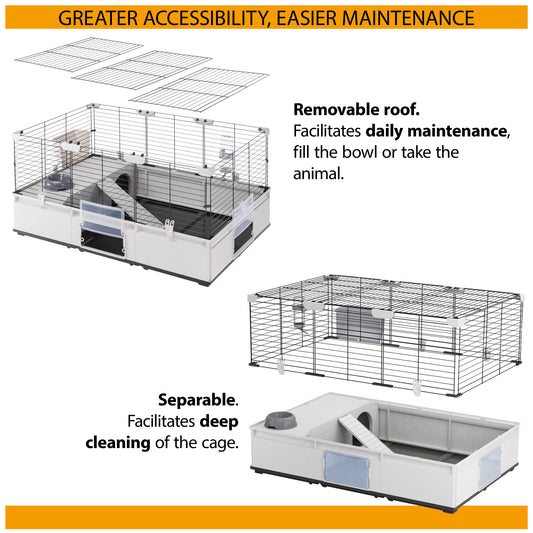Travelling with dogs
The availability of pet-friendly holiday accommodation in the UK has increased in recent years, enabling more people to share vacations with their pets than ever before. Whether you are looking for a luxury full-board hotel, self-catering bolt hole, or glamping experience, you’ll be able to find something to suit your taste and budget without excluding your pet.
With a bit of preparation and planning, there is no reason why packing your pet should cause you any extra holiday headaches. Here are some top dog travel tips to ensure any trip is plain sailing!
Safety
The most important thing to get right when travelling with a dog is safety, including being aware of your legal responsibilities. Rule 57 of the Highway Code states: “When in a vehicle make sure dogs or other animals are suitably restrained so they cannot distract you while you are driving or injure you, or themselves, if you stop quickly. A seat belt harness, pet carrier, dog cage or dog guard are ways of restraining animals in cars.”
While there is not a direct penalty for breaking the Highway Code, you could be pulled over for driving without due care and attention if your dog is not properly restrained and is deemed a distraction. If your dog needs to sit on the front seat beside the driver, ensure that the passenger airbag is de-activated and do not let your dog put his head out of the window.
There are lots of different car safety solutions available on the market that are suitable for all vehicle types. If your dog is unused to a particular restraint, don’t wait until the first time you want to travel to use it as it could result in your pet becoming stressed. Introduce your dog to the restraint gradually, using lots of praise and treats to help with positive reinforcement. Initially, have your dog in the car for just a short time without going anywhere and slowly increase this.
Travel sickness
It is not uncommon for dogs to be sick when travelling in a car, although travel sickness usually tends to affect puppies and young dogs. This is due to the ear structures that deal with balance in the ear not being fully developed. Stress can also play a part in car sickness, so make sure that your dog is happy travelling and gradually build up the amount of time they spend on the road. You can also use calming sprays to help relax your pet on the move.
Signs that your dog could be suffering from travel sickness – aside from vomiting – include yawning, listlessness, whining, licking lips or excessive drooling.
You can help a dog prone to travel sickness by not feeding them before you travel, ensuring you have plenty of breaks in your journey, and keeping your car well ventilated. Older dogs who have not grown out of travel sickness can be given anti-nausea medication prior to travel if recommended by a vet.
Comfort
When planning your journey, think about where you can stop on route for your dog to go to the toilet, have a drink and stretch their legs. Regular breaks during a long journey will help relieve boredom too.
It is a good idea to give your dog a good walk before your journey if possible so that they are more likely to settle when they get into the car. Also, having something to chew during the journey will help keep them occupied.
Make sure your dog is comfortable in the car with something soft to lie on and ensure that they do not get too hot. The boot of your car could be a different temperature to the front so check on your dog regularly. It is a good idea to use sunshades on the back windows to keep your dog out of direct sunlight.
Never leave your dog in a hot car, even for a short while with the windows open. Dogs mainly control their body temperature by panting but in a hot car this is not enough to stop them overheating. In warm weather the temperature within a car can jump rapidly to much higher than outside of the vehicle without your realising it. According to the RSPCA, when it’s 22 degrees outside it can reach an unbearable 47 degrees inside a car within an hour.
Public transport
Some dogs love travelling by train, bus or ferry but others can find public transport scary. A dog is more likely to feel comfortable on public transport if they have been introduced to it at a young age as part of their puppy socialisation.
Don’t assume that all modes of public transport accept dogs and check with individual operators before booking tickets. Generally speaking, dogs are allowed on buses, ferries and trains (including the London Underground) but not usually on coaches. Choose your travel times carefully to minimise stress, for example travelling at rush hour will be much busier than during the day.
You are responsible for keeping your dog under control on public transport so be realistic about what your pet is able to cope with. Ensuring they are familiar with key skills such as ‘sit’, ‘lie down’ and ‘settle’, as well as you being able to get your dog’s attention, will all help make them good travelling companions.
Shop All Dog Shop Dog Travel Essentials
If you found this article interesting, why not check out:
Planning a Holiday Without Your Dog









